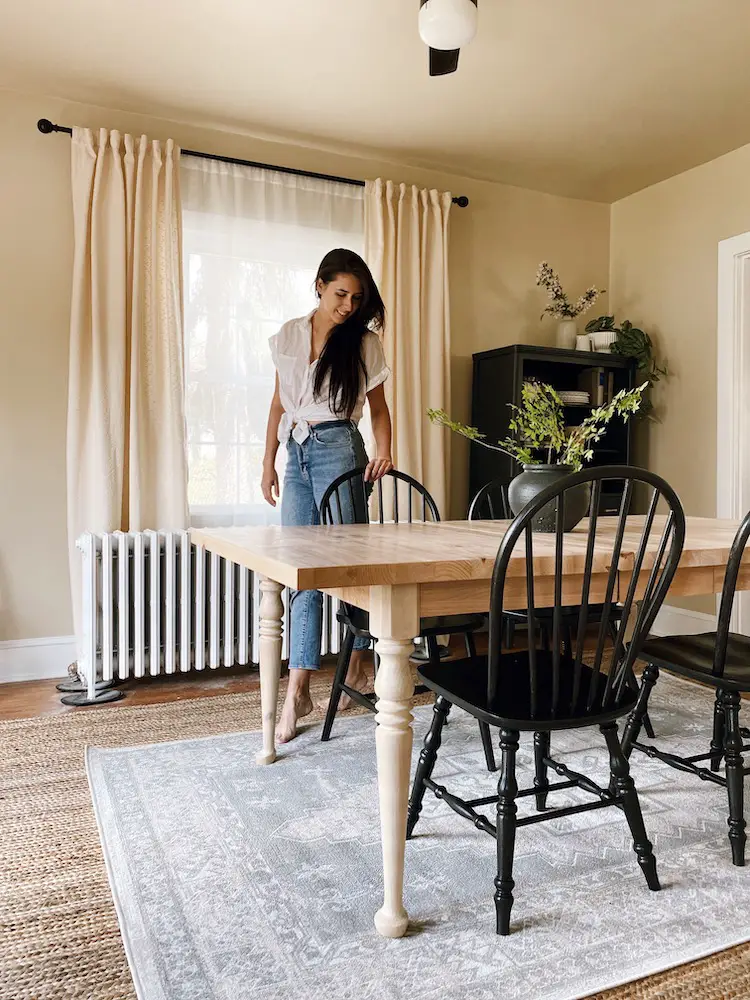Dining Room Table Legs: What to Think about Prior To You Get
Dining Room Table Legs: What to Think about Prior To You Get
Blog Article
A Comprehensive Take A Look At Table Leg Styles: Locating the Suitable Match
Choosing the appropriate dining table leg design is essential for both visual appeal and functional functionality. For those with bigger tables, trestle legs ensure strong support, whereas hairpin legs present a mid-century modern vibe with their minimal design. The x-shaped legs mix contemporary style with improved security.
Traditional Four Legs
Among the different kinds of eating table leg designs, the conventional four-leg style stays a classic selection for many homes. This traditional arrangement supplies a harmonious blend of functionality and looks, making it a seasonal fave. 4 legs give well balanced support, guaranteeing the table continues to be steady and with the ability of birthing substantial weight. This is particularly useful for households that frequently host large gatherings or utilize their dining table for multiple purposes, such as work or crafting.
From a visual viewpoint, the standard four-leg style can be easily adapted to numerous indoor styles. Whether crafted from timber, steel, or a combination of materials, these legs can be elaborately carved, streamlined and minimalistic, or anything in between. Their convenience enables them to complement both rustic and modern setups effortlessly.
Furthermore, the straightforward framework of the four-leg style facilitates convenience of motion and placement within an area. Unlike more complex bases, this design reduces blockages, supplying sufficient legroom for restaurants. In summary, the traditional four-leg table leg style weds withstanding elegance with functional functionality, making it a sharp option for those looking for both type and function in their eating furniture.
Stand Base
Frequently commemorated for its stylish and space-efficient layout, the pedestal base is a distinguished option to the traditional four-leg setup in table leg styles. This distinct base usually includes a single main column sustaining the tabletop, which can differ in form, from ornately carved timber to sleek, contemporary steel. One of the key benefits of the pedestal base is its capacity to optimize legroom and seating flexibility. Without corner legs, restaurants are afforded higher liberty of movement, making it an excellent choice for round and oval tables that advertise even more intimate and inclusive events.
The central column itself supplies a canvas for detailed styles and artistic expressions, including a component of visual interest under the table. In summary, the pedestal base incorporates performance with style, making it an improved and useful choice for varied eating environments.
Trestle Legs
Trestle legs give a durable and ageless structure for eating tables, identified by their straight cross-bracing and sturdy support beams. Originating from medieval times, this layout has advanced yet retained its important framework, making it a seasonal favorite in both traditional and contemporary setups. The main trestle beam of light, often sustained by two or more upright messages, provides phenomenal security, permitting bigger table sizes without the requirement for added legs.
A significant benefit of trestle leg tables is the ample legroom they use. Unlike tables with four corner legs, the lack of obstructions at the table's edges supplies unimpeded area for chairs and restaurants, enhancing comfort and access. This makes trestle tables optimal for suiting larger events, whether in an eating area or a banquet hall.
The aesthetic convenience of trestle legs is noteworthy. Offered in a selection of products such as wood, metal, and composite, they can be completed to match a vast range of interior designs. From rustic farmhouse to streamlined modern-day designs, trestle legs can be customized to fit private preferences. Their long-lasting allure and functional benefits make trestle legs a compelling option for those seeking both design and usefulness in their table.
Hairpin Legs

The appeal of barrette legs exists in their simplicity and adaptability - dining room table legs. Available in a variety of products, including steel and brass, they can be completed in countless colors to match various indoor styles. Whether matched with a rustic wood table top or a contemporary glass surface, barrette legs easily mix functionality with a touch of classic beauty
Resilience is one more significant attribute of hairpin legs. In spite of their fragile look, these legs are crafted to birth substantial weight, guaranteeing the dining table continues to be secure and secure. Additionally, they are reasonably very easy to install, making them a popular choice for DIY lovers and expert furnishings manufacturers alike.
X-Shaped Legs

Built from products such as steel, wood, or a mix of both, X-shaped legs can be customized to match numerous layout preferences. Steel legs frequently offer a streamlined and industrial feeling, suitable for loft-style homes and modern-day dining rooms. On the other hand, wood X-shaped legs offer a warmer, much more rustic allure, suitable for farmhouse or eclectic insides. The versatility in materials permits homeowners to personalize their table to much better fit their overall style system.
In addition, the design behind X-shaped legs ensures even weight distribution, reducing the danger of tottering and boosting longevity. This makes them particularly well-suited for larger table that require extra support. Basically, click for source X-shaped legs blend useful engineering with contemporary looks, making them a classic selection for varied eating atmospheres.
Final Thought
A detailed understanding of table dining room table legs leg designs exposes the unique qualities and benefits of each design. Traditional four legs offer security and classic charm, while pedestal bases offer legroom and a streamlined look. Trestle legs make certain durable support for larger tables, and hairpin legs present a mid-century contemporary aesthetic. X-shaped legs combine contemporary style with improved stability. Picking the ideal leg design guarantees both functional and visual contentment in any kind of dining space.
Report this page